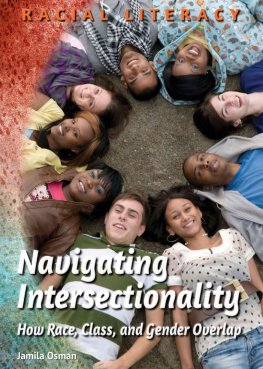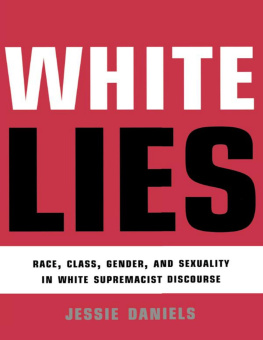Endnotes Collective - Endnotes #3: Gender, Race, Class and Other Misfortunes
Here you can read online Endnotes Collective - Endnotes #3: Gender, Race, Class and Other Misfortunes full text of the book (entire story) in english for free. Download pdf and epub, get meaning, cover and reviews about this ebook. genre: Politics. Description of the work, (preface) as well as reviews are available. Best literature library LitArk.com created for fans of good reading and offers a wide selection of genres:
Romance novel
Science fiction
Adventure
Detective
Science
History
Home and family
Prose
Art
Politics
Computer
Non-fiction
Religion
Business
Children
Humor
Choose a favorite category and find really read worthwhile books. Enjoy immersion in the world of imagination, feel the emotions of the characters or learn something new for yourself, make an fascinating discovery.
- Book:Endnotes #3: Gender, Race, Class and Other Misfortunes
- Author:
- Genre:
- Rating:3 / 5
- Favourites:Add to favourites
- Your mark:
- 60
- 1
- 2
- 3
- 4
- 5
Endnotes #3: Gender, Race, Class and Other Misfortunes: summary, description and annotation
We offer to read an annotation, description, summary or preface (depends on what the author of the book "Endnotes #3: Gender, Race, Class and Other Misfortunes" wrote himself). If you haven't found the necessary information about the book — write in the comments, we will try to find it.
Endnotes #3: Gender, Race, Class and Other Misfortunes — read online for free the complete book (whole text) full work
Below is the text of the book, divided by pages. System saving the place of the last page read, allows you to conveniently read the book "Endnotes #3: Gender, Race, Class and Other Misfortunes" online for free, without having to search again every time where you left off. Put a bookmark, and you can go to the page where you finished reading at any time.
Font size:
Interval:
Bookmark:
Gender, R ace, C lass and O ther M isfortunes
Endnotes Issue #3
Editorial
Past, present and future of the Endnotes project.
This issue of Endnotes has been a long time coming. Its publication was delayed due to experiences and conversations that compelled us to clarify our analyses, and at times to wholly rework them. Many of the articles in this issue are the products of years of discussion. Some articles spilled over into such lengthy pieces that we had to split the issue in two. Endnotes 4 will therefore be forthcoming, not in another three years, but rather, in the next six months. Here, by way of explanation for the delay, we describe some of the questions and quandaries that gave birth to this issue and the next.
1. NEW STRUGGLES
The first two issues of Endnotes called for a renewed focus on the struggles of our times, unencumbered by the dead weight of outmoded theories. However, we ourselves provided little analysis of struggles. Partly, that was because class conflict was at a low ebb at the time we were writing, and that made flights of abstraction more attractive. But it was also because we didnt know what we wanted to say about the struggles that were ongoing, and we thought it best not to pretend otherwise. We began this journal as a place for the careful working out of ideas. We didnt want to rush to conclusions for the sake of being topical.
That said, the milieu of which we form a part the so-called communising current did offer an analysis of struggles, which we found attractive.
Participants in the milieu observed that, even in factory struggles, the re-emergence of an affirmable working class identity seemed to be off the table: workers were self-organising, but without illusions about the revolutionary potential of such self-organisation. For example, in certain factories in South Korea, in France, in the US, and elsewhere workers took over their workplaces, not in order to run them on their own, but rather, to demand better severance pay. Meanwhile, many struggles were erupting outside of the workplace concerning students, the unemployed, racialised minorities with no interest in finding their way in. Workers in what were once bastions of working class strength (industry, construction, mining and utilities) could no longer offer up their struggles as a container for the needs of the class as a whole. Struggles over reproduction were supplanting those over production, even if the former seemed to lack the power vis--vis capital historically wielded by the latter.
The communising current also provided the following analysis of these struggles. They seem to hobble forward on two legs. Their first leg is the limit of struggle: acting as a class means having no horizon outside of the capitallabour relation. Their second leg is the dynamic : class belonging is then experienced as an external constraint, as something to be overcome. In the anti-globalisation movement, the dynamic of class struggle became autonomous from the struggle itself: the abandonment of a class position served as the basis from which to attack capital. The present crisis was supposed to force the legs of class struggle to walk together. Struggles were expected to re-emerge within the workplace, around a structurally illegitimate wage-demand. The forms that had characterised class struggle since the restructuring (radical democratism, activism) were to be overcome in a return to basics: abandoning a class position, from within the workplace, was going to be possible only as the generalised overcoming of class society.
That wasnt what happened. Instead we got the Arab Spring, Indignados, Occupy, Taksim, as well as plenty of riots. As we discuss in The Holding Pattern, in this issue, these struggles seemed more like a transformation of the anti-globalisation movements, as well as their extension to a wider portion of the population. That is not to say that recent struggles undermined the theory of communisation (or that dynamic struggles wont re-emerge within the workplace). Much about these movements confirmed the communising perspective: an intensification of struggle was not associated with the return of a workers identity. As we argue, it was precisely the unavailability of a constituting identity around the working class or otherwise that was at play in the dynamics of the movement of squares.
In light of these struggles, it seems clear that now is not the time for pronouncements, but rather careful analysis. In Endnotes 1 and 2 we tried to dismantle the twin traps set for us at the end of the last century: tendencies either (1) to stray from an analysis of capitals self-undermining dynamic, in order to better focus on class struggles occurring outside of the workplace, or else (2) to preserve an analysis of crisis tendencies, but solely in order to cling to the notion that the workers movement is the only truly revolutionary form of class struggle. We managed to evade these traps, towing along some meagre analytical tools. Now is the time to put those tools to work, to try to understand the new sequence of struggles in its unfolding. We must be open to the present its tendency to surprise us, to force us to reconsider every supposedly fixed truth while remaining intransigent about the revolution as communisation: there will be no theoretical compromises.
2. SURPLUS POPULATIONS
Endnotes 2 emphasized the role of surplus populations: populations with tenuous connections to waged labour. Surplus populations have been expanding due to a secular decline in the demand for labour, attendant on a reactivation of the contradiction of capitalist society. This social form, based on the centrality of labour, undermines that centrality over time. Capitalist growth thus undoes the terms of the relation on which it is grounded: the production of surplus populations alongside surplus capital is the final result of the immediate process of production.
That doesnt mean, however, that the surplus population is going to become a new revolutionary subject. On the contrary, the growth of surplus populations undermines the consistency of the revolutionary subject, as such. It is no longer possible to see capital as a mode of production with a future, integrating more and more people into it through development, i.e. industrialisation. Instead, the industrial working class is shrinking, almost everywhere. The workers movement, which previously organised itself around the hegemonic figure of the semi-skilled worker, can no longer provide consistency to the class. Nor can any other subject present itself as the bearer of an affirmable future.
The growth of surplus populations is precisely the disintegration, the decomposition of the class. Thus, the surplus population is not affirmable not only because it is a position of subjective destitution, or abjection but also because it is massively internally differentiated within itself. More than that: its growth is the increasing differentiation of the class as a whole. What role do surplus populations play in struggles, today? A Rising Tide Lifts All Boats, in this issue, provides a case study of the 201011 British anti-austerity movement and riots and enquires into the empirical applicability of the surplus population category.
3. THE GENDER DISTINCTION
Since the publication of our last issue, Communisation and the Abolition of Gender appeared in the anthology Communization and its Discontents . This text was the product of a ripening debate with Thorie Communiste , which has since turned a little rotten.
In their attempt to reconcile a feminist dual-systems approach with their previously elaborated theory, TC got lost in a debate with themselves about how many contradictions there are in modern society. For us, it makes no more sense to speak of a contradiction between workers and capital than it does to speak of one between men and women. In fact, the only contradiction between is the one with which Marx begins volume one of Capital , namely, the contradiction between use value and exchange value. Ultimately, capitalist social relations are contradictory because they are based around the exchange of equivalent values measured by the socially necessary labour time of their production and, at the same time, they undermine that basis, since they tend to displace human labour from the production process (that expresses itself, paradoxically, as overwork for many and un- or underemployment for others).
Next pageFont size:
Interval:
Bookmark:
Similar books «Endnotes #3: Gender, Race, Class and Other Misfortunes»
Look at similar books to Endnotes #3: Gender, Race, Class and Other Misfortunes. We have selected literature similar in name and meaning in the hope of providing readers with more options to find new, interesting, not yet read works.
Discussion, reviews of the book Endnotes #3: Gender, Race, Class and Other Misfortunes and just readers' own opinions. Leave your comments, write what you think about the work, its meaning or the main characters. Specify what exactly you liked and what you didn't like, and why you think so.








